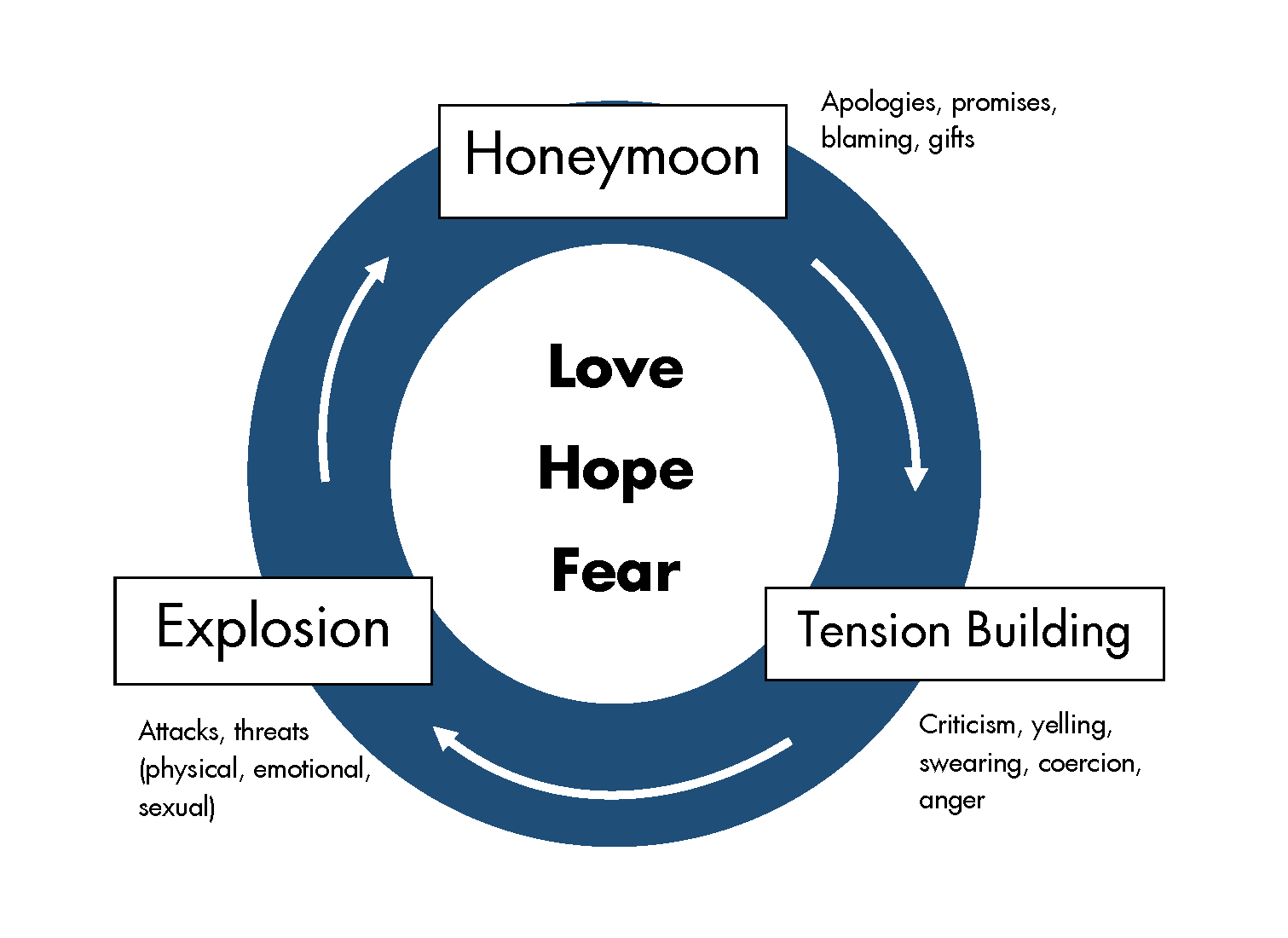Intimate partner violence is a recurring, chronic, deliberate pattern of aggressive and/or manipulative behaviors done by one partner (or ex) to gain power and maintain control over another in a relationship.
Intimate partner violence, sometimes called domestic or dating abuse/violence or relationship abuse/violence, is not limited to heterosexual couples. It can happen in any type of relationship including people in short-term relationships, queer relationships, or polyamorous relationships. Anyone of any gender identity can be an abuser and anyone of any gender identity can be a victim.
Additionally, abuse is not limited to being physical. There are many forms of relationship abuse:
- Physical Abuse
- Slapping or punching
Scratching, pinching, biting, or kicking
Strangulation
Throwing objects at the victim
Pulling the victim’s hair
Use of a gun, knife, box cutter, bat, mace or other weapon
Grabbing or squeezing the victim’s face to make them look at something
Preventing the victim from leaving or forcing them to go somewhere - Emotional/Verbal Abuse
- Name-calling and putdowns
Yelling or screaming at the victim
Using the children - to guilt the victim, to participate in the abuse, etc.
Blaming the victim for their own abuse
Punching holes in the walls to intimidate the victim
Gaslighting or “crazy-making” to manipulate or confuse the victim
Accusations of cheating and other signs of jealousy
Threats of self-harm or suicide to manipulate the victim
Threats to expose one’s immigration status
Threats to expose one’s HIV status
Threats to expose the victim’s sexual orientation
Embarrassing or ridiculing the victim in public
Preventing the victim from spending time with others
Not allowing the victim to practice their religion - Economic/Financial Abuse
- Preventing the victim from obtaining or keeping a job
Stealing the victim’s money
Creating a situation where the victim is financially dependent
Harassing the victim’s co-workers or supervisors to get them fired
Spending the victim’s paycheck on personal items without permission
Sabotaging the victim’s education or job - Sexual Abuse
- Unwanted sexual touching or kissing
Forcing the victim to perform sexual acts
Sabotaging birth control or condoms
Unwanted violent sexual activity
Intentionally attempting to impregnate the victim
Refusing to use birth control and condoms
Using the existing intimate relationship to justify unwanted sexual activity
Ignoring sexual boundaries - Digital or Technological Abuse
- Breaking the victim’s phone
Tracking the victim’s location with a GPS device
Constantly checking-in while the victim is with other people
Demanding the passwords to social media accounts
Looking through text messages or pictures without permission
Making derogatory posts about the victim on social media
Sending unwanted texts or pictures
Threatening to send intimate photos or videos to others
Some of these behaviors are criminal offenses in the state of California and UC Davis policy violations.
The Cycle of Violence

It is common for victims who are experiencing intimate partner violence to stay with their abusers, and even return to the relationship after some time away. Victims stay and/or return to the abusive relationship for a variety of reasons: hope that the abuse will stop, fear of not being able to make it on their own, concern that their safety might be more at risk if they leave, etc. The cycle of violence can help us understand the complicated dynamics of an abusive intimate relationship. During this cycle, the abuse is followed by a honeymoon stage. The abuser may apologize for their behavior, give the victim gifts, and promise that they will never do it again. However, this honeymoon doesn’t last and the relationship will go into a tension-building phase where the victim feels like they are walking on eggshells. They may feel unsafe and try to do everything they can to appease their partner. This can include changing their daily routine, stop spending time with their family or friends, give their partner access to their social media accounts, etc. Eventually, the violence or explosive phase occurs again. After this phase, the relationship enters a false honeymoon phase where the abuser may apologize, promise to change, give the victim gifts, etc. The relationship continues to move back and forth between abuse and good times or just times of less abuse.
Please visit the UC Davis Sexual Violence Website to learn more about the UCD policy on dating/domestic violence
